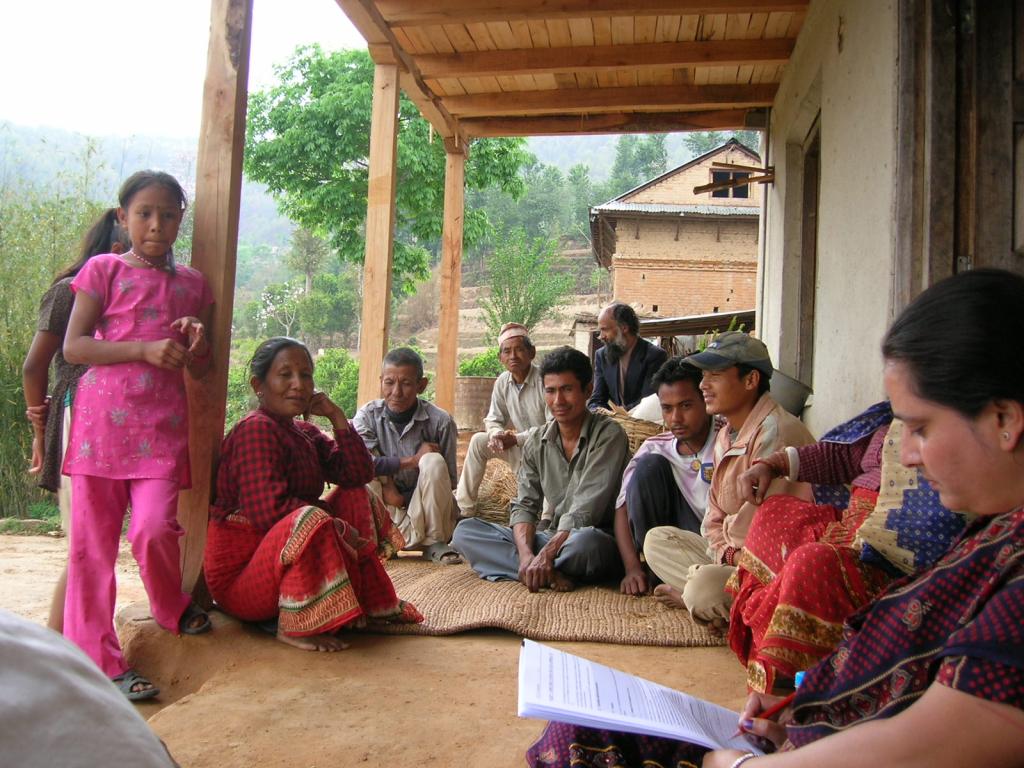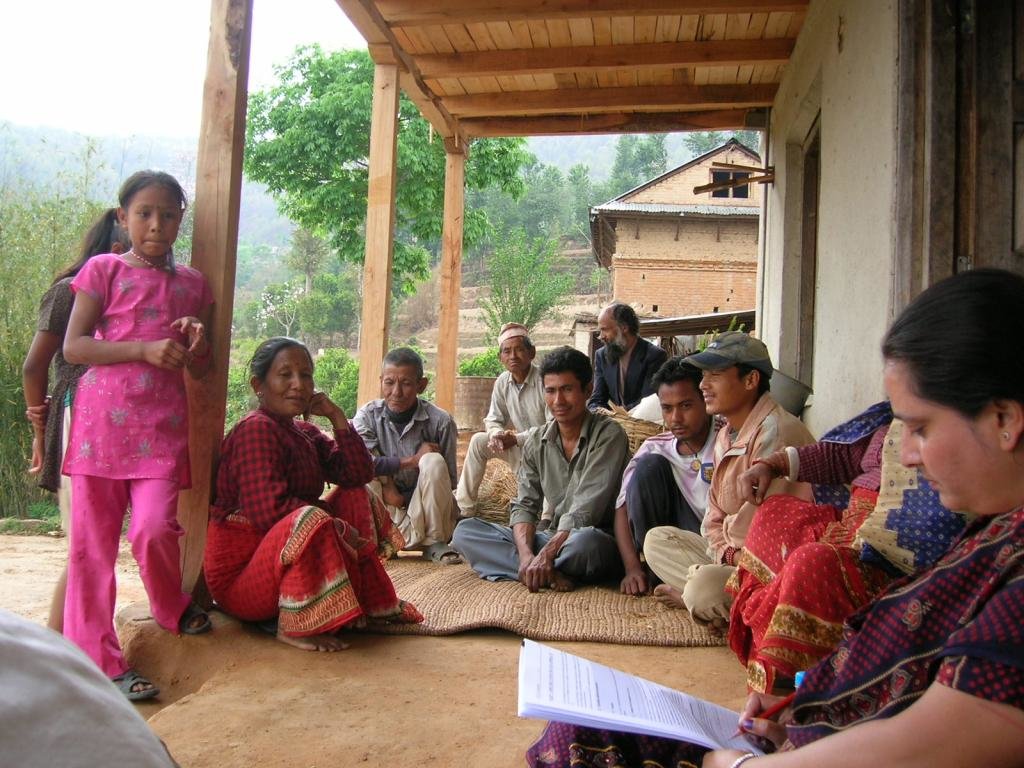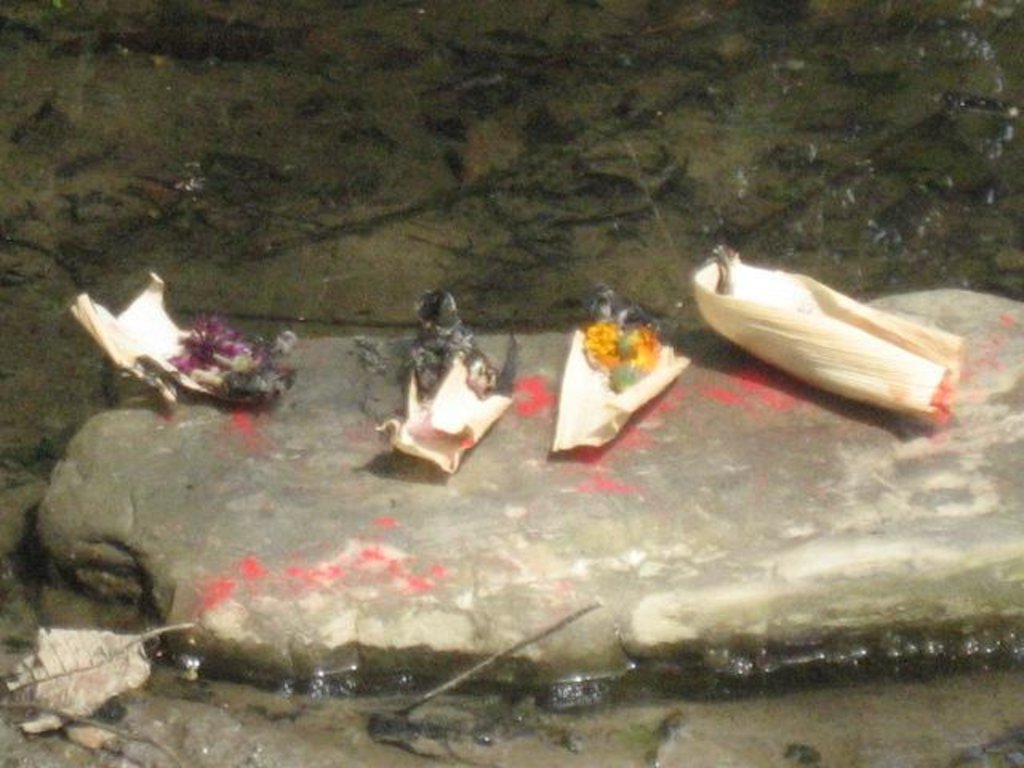Trans-generational approach for the protection of gully [Nepal]
- Creation:
- Update:
- Compiler: Sabita Aryal
- Editor: –
- Reviewer: Fabian Ottiger
Samudaik Kholsa Sanrakshan
approaches_2669 - Nepal
View sections
Expand all Collapse all1. General information
1.2 Contact details of resource persons and institutions involved in the assessment and documentation of the Approach
Name of the institution(s) which facilitated the documentation/ evaluation of the Approach (if relevant)
Kathmandu University (KU) - NepalName of the institution(s) which facilitated the documentation/ evaluation of the Approach (if relevant)
Sarada Batase Village Development Committee (Sarada Batase VDC) - Nepal1.3 Conditions regarding the use of data documented through WOCAT
The compiler and key resource person(s) accept the conditions regarding the use of data documented through WOCAT:
Ja
2. Description of the SLM Approach
2.1 Short description of the Approach
The gully protection activities were initiationed and maintained by local people by using local materials based on their indigenous knowledge which supports to achieve more sustainable soil and water management.
2.2 Detailed description of the Approach
Detailed description of the Approach:
Aims / objectives: The aim of the approach is to reduce gully formation, protect the fertile agricultural land and minimise the effect of slipping down of the village.
Methods: Individual farm ownner along the side of the gully take the first responsibility of the maintannce. The Jagidol village community and the Newari Guthi of the region, and all Hindus who worship for the Nagdevata and Shiva devata along the stream bank take extra care and consiousness on gully protection. It is a collective efforts through social networks.
Stages of implementation: Ever on going. Basically individual initiation. If the problem is bigger in Community gathering and discussion takes place for planning of necessary activities. Material will be collected locally. Hands of implementation is called from the local area. This approach has been continued for over 200 years.
Role of stakeholders: The land wonner along the stream bank have major role, if the situation becomes terrific then only other give hands. Men are more active for the land protection during crisis such as flood, but in regular upkeeping and maintainance women are more active.
Other important information: Gully is much more in control in the upper region where the bioengeenering approache is applied; there it is more stable and mature. In the lower belt of the gullies it still is under the need of regular maintanace.
2.3 Photos of the Approach
2.5 Country/ region/ locations where the Approach has been applied
Country:
Nepal
Region/ State/ Province:
Nepal
Further specification of location:
Kavre
2.7 Type of Approach
- traditional/ indigenous
2.8 Main aims/ objectives of the Approach
The Approach focused mainly on other activities than SLM (Activities of religious, cultural and biological importance)
To protect agains gully formation. To protect under the soil loss. To protect the land from flood. Protection of source of water for dry season. To prevent landslides. To prevent the slidding of the hill towards the gully. To improve the well being of the farm and farmer.
The SLM Approach addressed the following problems: Lack of institutional development. The group is not registered anywhere in a conservation team or organisation. Thus getting no technical and financial support from government or non-governmental organisations. The research done by the community is not documented, it is trasmitted by mouth to mouth. To manage the gully labour shortage in the village is a rwal constraint.
2.9 Conditions enabling or hindering implementation of the Technology/ Technologies applied under the Approach
social/ cultural/ religious norms and values
- hindering
situation of the temple nearby the gully and worship place for 'Nag devta'( snake God)
Treatment through the SLM Approach: mutual discussion and decision
availability/ access to financial resources and services
- hindering
to buy implementation tools
Treatment through the SLM Approach: use of local material, call for kind donations within the community and if possible, cash from the community
institutional setting
- hindering
no linking of the act with the organisation
Treatment through the SLM Approach: self management
legal framework (land tenure, land and water use rights)
- enabling
The existing land ownership, land use rights / water rights greatly helped the approach implementation: The land in the gully side is owned by individual farmers. The water resource available next to the farm is also used by the individual farmer. Thus the managing of the gully, stopping further erosion etc. is also in responsibility of the owners. If a problem increases at a certain site of an individual farmer, this means his land will be more affected than others, he takes the initiative for getting help from availabe sources of the village community
- hindering
land owner is the most responsible
Treatment through the SLM Approach: the land owner is convined by other villagers to maintain the gully near by his plot
knowledge about SLM, access to technical support
- hindering
no complete awarness of the conservation acts but continued as it is transmitted from generation to generation
Treatment through the SLM Approach: new methods and material are used by learning from other program or project implemented in the neighbourhood areas
workload, availability of manpower
- hindering
During the busy parts of the farming calendar there is little or no labour available for SLM projects.
Treatment through the SLM Approach: SLM projects are scheduled so that they coincide with periods of less farm labour stress, i.e. dry season.
other
- hindering
Conservation measures generate more time during the busy farming period of monsoon
Treatment through the SLM Approach: extra hands will be called from the community
3. Participation and roles of stakeholders involved
3.1 Stakeholders involved in the Approach and their roles
- local land users/ local communities
The people who own the land near by the stream and the village as a whole. The land owners and elderly persons of the village
It is considered as a heavy work and therefore carried out by young men. Men are involved during the problem time. Women are regularly involved all around the year for the maintanance.
- national government (planners, decision-makers)
- international organization
- near by villager or practitioner
If several stakeholders were involved, indicate lead agency:
The old man and women in community take initiative to explain best methdos.Young men on the basis of their observation around the other similar problem and solution choose the option and implement. Women member maintain the gully during the farming time.
3.2 Involvement of local land users/ local communities in the different phases of the Approach
| Involvement of local land users/ local communities | Specify who was involved and describe activities | |
|---|---|---|
| initiation/ motivation | self-mobilization | The villagers realised that they needed to protect the land to increase the amount of available farming land and to protect their village from landslides. |
| planning | self-mobilization | The villagers plan various counter measures during the dry season, so that when the monsoon come their land would be protected |
| implementation | self-mobilization | The land users implemented the protective measures using local materials . |
| monitoring/ evaluation | self-mobilization | The build protective measure are maintained and repaired from time to time. |
| Research | none | no documentaion is made besides our study |
3.4 Decision-making on the selection of SLM Technology/ Technologies
Specify who decided on the selection of the Technology/ Technologies to be implemented:
- land users alone (self-initiative)
Explain:
The land users have been implementing these technologies since many years. They have developed their own methods and selection of technology and material by trial and error. They have used intuitive reasoning for excellence.
Decisions on the method of implementing the SLM Technology were made by by land users* alone (self-initiative / bottom-up). by observing the best resulting methods and material. By learning from the nearby places where the technology is selected under the guidance of conservation specialists.
4. Technical support, capacity building, and knowledge management
4.1 Capacity building/ training
Was training provided to land users/ other stakeholders?
Ja
Form of training:
- on-the-job
- farmer-to-farmer
4.3 Institution strengthening (organizational development)
Have institutions been established or strengthened through the Approach?
- no
4.4 Monitoring and evaluation
Is monitoring and evaluation part of the Approach?
Ja
Comments:
bio-physical aspects were regular monitored by land users through observations; indicators: No formal reporting was ever made, but evolution of the approach were continually observerd.
technical aspects were regular monitored by land users through observations; indicators: No formal reporting was ever made, but evolution of the approach were continually observerd.
Continuity of the approach aspects were regular monitored by land users through observations; indicators: No formal reporting was ever made, but evolution of the appraoch were continually observerd.
There were few changes in the Approach as a result of monitoring and evaluation: The insecurity factor of the land user is combined with religious aspects such as the development of temple
There were few changes in the Technology as a result of monitoring and evaluation: New and recent material and technology is emerging in the lower area were the practice is relatively young
5. Financing and external material support
5.1 Annual budget for the SLM component of the Approach
If precise annual budget is not known, indicate range:
- < 2,000
Comments (e.g. main sources of funding/ major donors):
Approach costs were met by the following donors: local community / land user(s) (There has been no external aid): 100.0%
5.2 Financial/ material support provided to land users
Did land users receive financial/ material support for implementing the Technology/ Technologies?
Nee
5.3 Subsidies for specific inputs (including labour)
- none
If labour by land users was a substantial input, was it:
- voluntary
Comments:
Full costs to land users
5.4 Credit
Was credit provided under the Approach for SLM activities?
Nee
6. Impact analysis and concluding statements
6.1 Impacts of the Approach
Did the Approach help land users to implement and maintain SLM Technologies?
- No
- Yes, little
- Yes, moderately
- Yes, greatly
Land slide and food shortages are reduced, soil loss is prevented. The sliding of the hill and community habitation is improving.
Did the Approach empower socially and economically disadvantaged groups?
- No
- Yes, little
- Yes, moderately
- Yes, greatly
Did the Approach improve issues of land tenure/ user rights that hindered implementation of SLM Technologies?
- No
- Yes, little
- Yes, moderately
- Yes, greatly
Community action will be not taken unless the individual farmer takes his initiative to solve the problem. Since it is individual farm it is thought to be managed by the land owner particularly
Did other land users / projects adopt the Approach?
- No
- Yes, little
- Yes, moderately
- Yes, greatly
Other farmers from neighbouring valleys have seen the SLM measures implemented in the gully and have adopted them in their own region.
Did the Approach lead to improved livelihoods / human well-being?
- No
- Yes, little
- Yes, moderately
- Yes, greatly
With increase in water ans soil conservation, there is provided increased arable land for quality crop production, thus also improves health and well being in the valley
Did the Approach help to alleviate poverty?
- No
- Yes, little
- Yes, moderately
- Yes, greatly
The production of the farm is now sufficient for more months then it was before. As a whole the village has benefited from the approach increasing the wealth of the village.
6.2 Main motivation of land users to implement SLM
- increased production
Creating better soil conditions and water management for irrigation
- increased profit(ability), improved cost-benefit-ratio
With more farmland and water for irrigation more profits can be obtained.
- environmental consciousness
When the farmers cleared too much land they realised that they needed to implement SLM measures
- well-being and livelihoods improvement
With better drinking water the community's well-being improved.
- Risk minimisation
The risk of flooding and runoff of farm and soil, landslide is major threat to them.
6.3 Sustainability of Approach activities
Can the land users sustain what has been implemented through the Approach (without external support)?
- uncertain
If no or uncertain, specify and comment:
The approach needs subsidies or external support to sustain it due to shortage of local labor volunteers. With funding support the village can purchase better materials to create longer lasting structures.
6.4 Strengths/ advantages of the Approach
| Strengths/ advantages/ opportunities in the land user’s view |
|---|
| Remarks and suggestion of nearby land users and community persons are taken into serious consideration (How to sustain/ enhance this strength: Learning of society to respect and regard others suggestion. Morale value) |
| Strengths/ advantages/ opportunities in the compiler’s or other key resource person’s view |
|---|
| Community network and individual farm ownership, self farming by land owner, most of the landowner reside at the same hill (How to sustain/ enhance this strength: Discourage migration of farming community to nearby city) |
6.5 Weaknesses/ disadvantages of the Approach and ways of overcoming them
| Weaknesses/ disadvantages/ risks in the land user’s view | How can they be overcome? |
|---|---|
| Migration of farmer for better job. Commencement of new owner. Comming of a brick making factory instead of farming. | Government should give more rules for cultivable land. |
| Weaknesses/ disadvantages/ risks in the compiler’s or other key resource person’s view | How can they be overcome? |
|---|---|
| No proper and formal planning. No connection with authority and funding organisations | Formalisation of the group for conservation practices |
7. References and links
7.1 Methods/ sources of information
- field visits, field surveys
- interviews with land users
Links and modules
Expand all Collapse allLinks
No links
Modules
No modules





